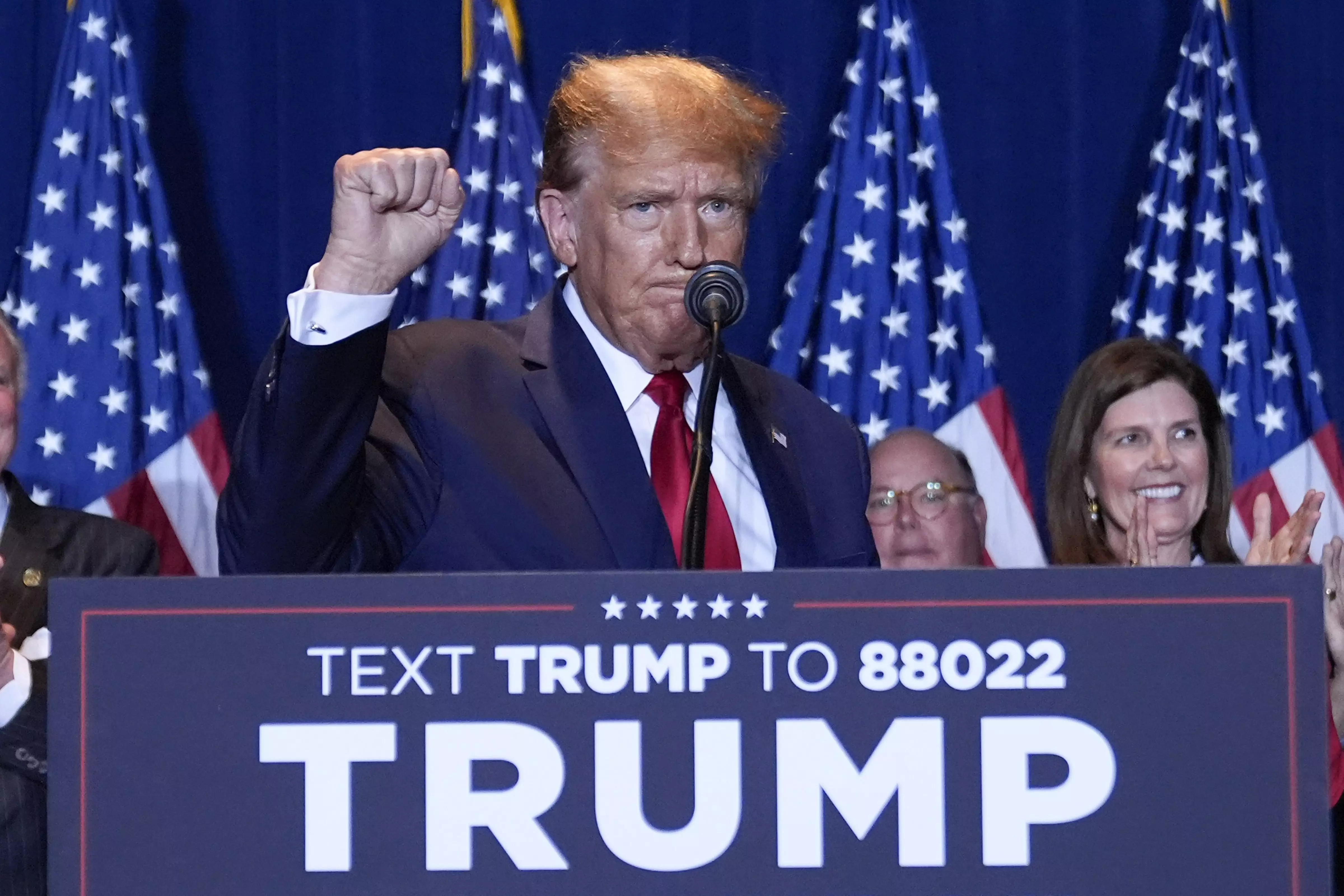
US elections and spending caution cast a shadow over Indian IT services' prospects
Analysts recommend a cautious approach for investors, advocating an underweight stance on the Indian IT sector.

For nearly a decade, around this time each year – with the exception of the pandemic period – the short-term outlook for the IT services industry has been subdued, whereas the long-term prospects have appeared promising.
Nevertheless, several challenges unique to this year merit attention, notably the "Trump factor" and the hesitancy of enterprise clients to raise discretionary spending.
Immigration issue
The former US President, Donald Trump, is making a spirited attempt to return to power, and if he decides to bring back a policy which temporarily suspended a range of worker visas for non-immigrants until the end of 2020, the Indian IT domestic industry will be hugely impacted.
The issue of immigration is a prominent feature in the election discourse. Trump has advocated for stricter immigration controls and the implementation of measures such as the controversial travel ban. Conversely, the Democratic nominee has proposed a more inclusive approach to immigration, emphasising reforms aimed at facilitating legal pathways to citizenship for undocumented immigrants. The election outcome will, therefore, have far-reaching consequences for businesses reliant on immigrant labour, particularly in sectors such as technology, healthcare, and agriculture.
Scarcity of mega or large deals
The hesitation in spending has been observed since September 2023, with even mega or large deals being scarce. The caution in spending is attributed to uncertainties regarding future economic conditions, including the trajectory of interest rates. Despite the overall health of the US economy, enterprise clients, particularly those engaging with Indian IT service firms, are reluctant to increase discretionary spending. This reluctance suggests a cautious approach among businesses towards investments in IT services, even for critical projects or large-scale deals.
The hesitancy in spending is evident from the scarcity of mega or large deals since September 2023. These deals typically involve substantial investments and have become less frequent, indicating a broader trend of cost-consciousness or risk aversion among enterprises.
What analysts say
"We see further downside risk to earnings for the Indian IT Services industry for both FY25 and FY26 as current revenue assumptions seem aggressive in the context of industry commentary, the timing of turnaround in growth, prospects of US interest rate trajectory and uncertainty around US economic policies consequent to the presidential elections," stock broking firm Nirmal Bang analysts said in a note to investors.
Enterprises may also adopt risk mitigation strategies, such as delaying investments, renegotiating contracts, or seeking cost-saving measures. These strategies can further contribute to the slowdown in spending within the IT sector.
Overall, the reluctance of enterprise clients to increase discretionary spending reflects broader concerns about economic stability and future prospects.
The guidance provided by global firms such as Accenture and Capgemini for FY24/CY24 suggests a cautious outlook, assuming modest growth rates. The anticipation of a slowdown in spending due to factors like the US presidential election adds to future performance uncertainty.
Clients continue to prioritise investing in large-scale transformations, which convert to revenue more slowly while limiting discretionary spending, particularly on smaller projects.
Decision-making delayed
Accenture (ACN), a key peer of Indian IT services companies, reported its 2QFY24 results in a management commentary and said it continued to witness delays in decision-making and a slower pace of spending.
“Clients are navigating an uncertain macro-environment due to economic, geopolitical, and industry-specific conditions,” stock broking firm Motilal Oswal, quoting management commentary, said this in its note to investors.
In the short term, the Indian IT services industry faces downside risks to earnings, with revenue assumptions appearing aggressive, given the prevailing demand conditions and uncertainties.
Analysts recommend a cautious approach for investors, advocating an underweight stance on the Indian IT sector. Concerns about overestimating growth and margin risks and expensive valuations drive this recommendation. Tier-1 companies are favoured over Tier-2 due to perceived strengths in scale and capabilities.
"We fear that the Indian Tier-2 set would suffer more because of vendor consolidation under the pressured profit picture for customers, a less diversified revenue mix (client, service line, vertical), which could throw up negative growth surprises and a larger exposure to non-Global 1000 clientele, whose profits are more vulnerable in the current macro environment," Nirmal Bang said.
Impact of US Monetary Policy: Expectations of a back-ended pickup in growth are linked to anticipated rate cuts by the Federal Reserve. However, there is uncertainty about the effectiveness of such cuts in stimulating spending. Recent inflation data has led to speculation about the possibility of a rate hike, which could further dampen spending sentiments.
Technology Trends: The emergence of new technologies, such as Gen AI, presents opportunities for revenue growth. However, the pace of adoption and conversion of these opportunities into revenue streams may be slower, contributing to the overall cautious outlook for FY24.
Positives exist
However, certain positives exist in the current scenario. The industry lobby group Nasscom has pointed out that the sector is expected to reach $500 billion by 2025.
While there are opportunities for growth in outsourcing and emerging technologies, the prevailing cautious spending environment and potential downside risks to earnings warrant a prudent approach for investors and industry stakeholders alike.

